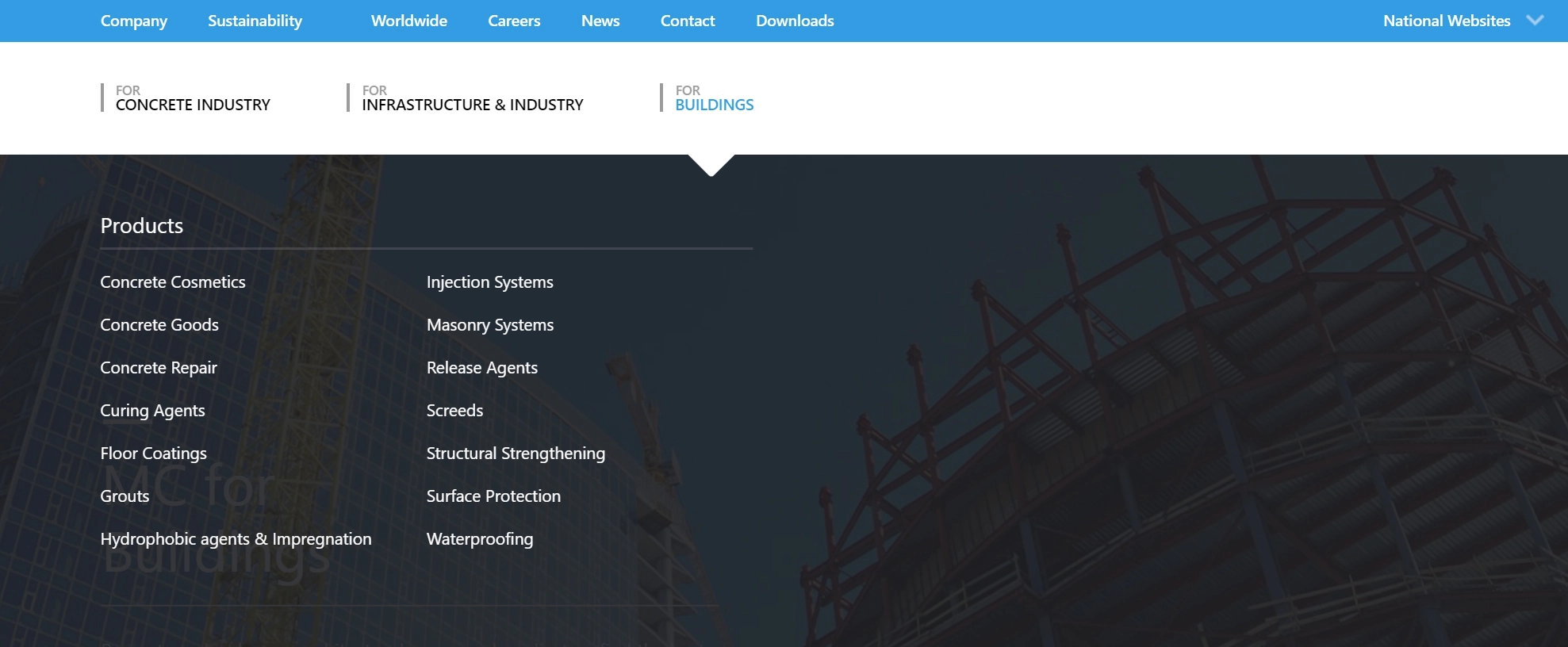Solutions
Designing User-Centered Experiences: For ChemiCore’s website redesign, the user persona research was essential to tailor the user experience to the specific needs and behaviors of American customers in the chemical industry. This research revealed several key insights:
- Decision-Making Factors: American customers in the chemical sector prioritize reliability, product quality, and compliance with safety standards. Knowing this, the design choices focused on establishing credibility through professional visuals, detailed product information, and prominently displayed certifications and safety data.
- Technical Proficiency: The user personas indicated a high level of technical proficiency among the target audience, which includes engineers, technicians, and procurement managers. This influenced the decision to include detailed technical descriptions, comparison tools, and advanced search filters to help users find the exact specifications they need.
- Value of Time: Time efficiency was identified as a critical factor. Users preferred streamlined interactions that allowed them to accomplish tasks quickly. In response, I ensured that the website design minimized load times and optimized the path to conversion with clear call-to-action buttons and straightforward navigation paths.
The structuring of the website’s navigation was directly influenced by the insights drawn from Google Analytics, which provided detailed data on how users interacted with the current site:
- Frequently Accessed Information: Google Analytics showed that product specifications, pricing information, and safety data sheets were the most frequently accessed content by visitors. This highlighted the need for easy access to these sections.
- Navigation Patterns: Analysis of user navigation patterns revealed that visitors often used the search function to find specific products and related resources. This insight led to the design of a mega menu that grouped products by categories such as type, application, and compliance standards, making it easier for users to navigate directly from the homepage to the information they need without redundant clicks.
- User Flow Optimization: By understanding the typical paths users took through the site, we were able to optimize the flow to reduce the number of steps from landing on the site to finding relevant product information or contacting the company. This was achieved by placing direct links to popular products and applications on the homepage and improving the visibility of the contact section.
I utilized a minimalist design approach using a clean, modern aesthetic with a professional color palette to communicate trustworthiness and authority. This was facilitated through creation of high-fidelity mockups and Illustrator for vector-based graphics, ensuring high-quality visuals across all pages.
I utilized CSS Flexbox and Media Queries to ensure that the website layout was flexible and responsive across all device types and screen sizes. This approach allowed for an optimal viewing experience whether on a desktop, tablet, or smartphone, addressing the mobile-first behavior of the modern user.

This screenshot shows the mega menu designed to streamline user experience by categorizing products by type, application, and compliance standards, allowing quick and direct access
Boosting Lead Generation Through Email Marketing: I integrated a robust email marketing system to enhance client engagement and lead generation. Recognizing the need to keep potential clients informed and interested, I strategically placed subscription forms across high-traffic areas of the site, such as near blog posts, product pages, and the footer. These forms were designed to be simple and user-friendly, encouraging visitors to subscribe without feeling overwhelmed. Once subscribed, users entered a nurturing funnel where they received tailored emails that included updates on new products, detailed case studies, and valuable industry insights. This approach was powered by Mailchimp, which allowed us to segment the audience based on their interests and engagement levels, ensuring that the content was highly relevant and increased the likelihood of conversion. By consistently delivering targeted and informative content, we not only kept ChemiCore top-of-mind among potential clients but also effectively built a community around their brand.
Driving Relevant Traffic Through Strategic Keyword Research: To optimize ChemiCore’s visibility in the U.S. construction market, I did comprehensive keyword research. Utilizing SEMrush and Google Keyword Planner, I identified a list of high-value keywords that mirrored the specific vernacular used by industry professionals and matched ChemiCore’s product offerings.
- Identifying Industry-Specific Keywords: I started by gathering a broad list of terms related to ChemiCore’s core business—chemical products used in construction. Using industry journals, competitor websites, and conversations with ChemiCore’s sales team, I gathered initial terms that the target audience might use.
- Refining Keywords with Tools: With a preliminary list in hand, I used SEMrush and Google Keyword Planner for deeper insights. These tools helped me assess search volume and competition for each term, which is crucial for selecting keywords that are not only relevant but also achievable in terms of ranking potential. For example, I looked for terms which had a balanced volume-to-competition ratio.
- Considering Search Intent: Understanding the intent behind searches was a key part of my strategy. I categorized keywords into informational (e.g., “how to use chemical sealants”), navigational (e.g., “ChemiCore products”), and transactional (e.g., “buy industrial adhesives online”). This helped in tailoring content that meets potential customers at different stages of their buying journey.
- Localizing Keywords: Since the focus was on the U.S. market, I localized the keywords to include regional vernacular and terms specific to the U.S. construction industry, such as “LEED certification chemicals” which are particularly relevant due to the popularity of LEED standards in U.S. construction.
Boosting Rankings with Comprehensive SEO Strategy: The strategy for enhancing ChemiCore’s on-page and off-page SEO was carefully crafted to address specific goals: improving search engine rankings, increasing site traffic, and ultimately, boosting conversion rates. Here’s how each component was approached:
- Content Optimization: I focused on incorporating keywords that were carefully researched, ensuring they aligned with what potential customers were searching for related to the construction and building materials industry. This included creating detailed product descriptions, informative blog posts, and resourceful guides that not only provided value but also incorporated target keywords naturally.
- Meta Tags and Headings: I crafted title tags and meta descriptions for each page to ensure they were optimized for targeted keywords while also being enticing enough to improve click-through rates from search engine results pages (SERPs). Headings (H1, H2, H3) were used strategically to structure content effectively and include primary and secondary keywords, improving the page’s SEO while making content easy to scan for users.
- Image Optimization: All images on the site were optimized for speed and accessibility. This included compressing images to reduce load times and defining alt text using relevant keywords, which helped in improving the site’s accessibility and provided SEO benefits.
- URL Structure: URLs were structured to be clean and keyword-rich. This not only helped in better indexing by search engines but also improved user experience by providing clarity on the content of the page before clicking the link.
- Internal Linking: To enhance site navigation and distribute page authority throughout the site, I implemented a robust internal linking strategy. This included linking to relevant content within blog posts and on product pages, which helped reduce bounce rates and encouraged users to spend more time on the site.
- Backlink Building: The off-page SEO efforts were primarily focused on building a strong backlink profile. I targeted reputable sites within the construction and building materials sectors for guest posting opportunities. By creating compelling content that these sites would want to feature, I secured backlinks that not only drove referral traffic but also enhanced domain authority.

This pie chart illustrates the strategic distribution of ChemiCore’s backlinks across various authoritative sources.
Boosting Leads with Strategic Ad Campaigns: Upon the completion of the website redesign, we initiated a PPC campaign to quickly increase visibility and drive targeted traffic. I focused on reaching decision-makers within the construction industry through targeted search ads. Here’s a closer look at my strategic approach and the thought processes that shaped the campaign:
- Campaign Segmentation by Product Use-Case: Recognizing that ChemiCore offers a diverse range of products, each serving different needs in the construction sector, I segmented our PPC campaigns based on specific use-cases.
- Dynamic Keyword Insertion (DKI): To enhance ad relevance and engagement, I used Dynamic Keyword Insertion in our ad headlines and descriptions. This technique automatically updated the ad text to include exact phrases that users searched for, aligning with the specific keywords tied to each product segment.
- Geo-Targeting Adjustments: I refined our geo-targeting by focusing on regions known for high construction activity and those with burgeoning green construction markets, aligning with the specific products being advertised.
- Ad Copy Creation: With our keywords in hand, I moved on to crafting compelling ad copy. Our ads were tailored to underscore ChemiCore’s unique selling points, such as the durability of their products, cost-efficiency, and compliance with industry standards. It was important that each ad addressed the specific needs and challenges of our audience, clearly demonstrating how ChemiCore’s offerings could resolve relevant industry issues.
- Landing Page Optimization: I linked each ad to a specially designed landing page that echoed the ad’s message, creating a seamless transition from ad to website. This consistency is critical for maintaining user interest and building trust. The landing pages were optimized to convert visitors into leads, featuring straightforward messaging aligned with the ads, and user-friendly forms and contact details to streamline the lead generation process.
- Performance Monitoring and Adjustment: I continuously monitored the campaign using tools like Google Analytics and Google Ads reports. This allowed me to make real-time adjustments—whether tweaking ad copy, refining targeting, or reallocating the budget to more effective keywords. Constant monitoring and adjustment ensured that we maximized our return on investment.
Results
Following the launch of the redesigned website, ChemiCore Industries experienced a significant improvement in user engagement, evidenced by a 30% decrease in bounce rates and a 50% increase in average session durations. This enhanced user experience, coupled with streamlined lead generation forms, resulted in a 40% increase in lead conversions.
The SEO optimizations effectively resulted in a 35% increase in organic traffic, with some of the high-value targeted keywords climbing to the first page of search results, substantially enhancing their visibility among U.S. construction industry professionals.
The PPC campaign strategically targeted industry-specific keywords and user demographics, achieving a 20% increase in sales-qualified leads, directly enhancing ChemiCore’s pipeline and potential revenue in the U.S. construction sector.
Each solution from the UX overhaul to the precise PPC ads played a pivotal role in these achievements, demonstrating a direct correlation between the strategic improvements and the tangible results. The strategic overhaul of ChemiCore’s digital marketing efforts has laid a robust foundation for sustained growth and market expansion in the U.S.
Client names and specific identifiers have been anonymized to protect their privacy and maintain client confidentiality.

